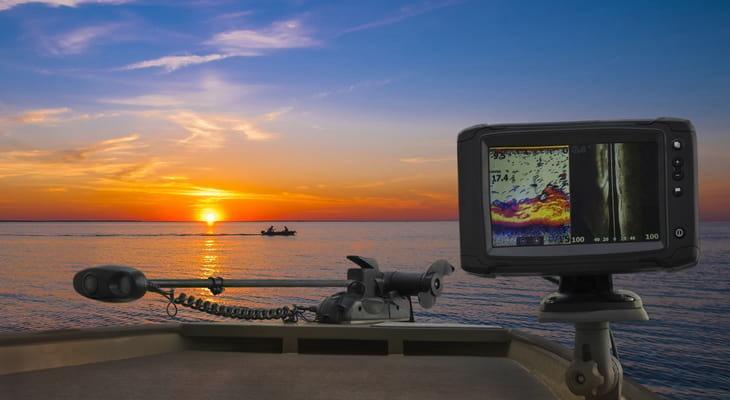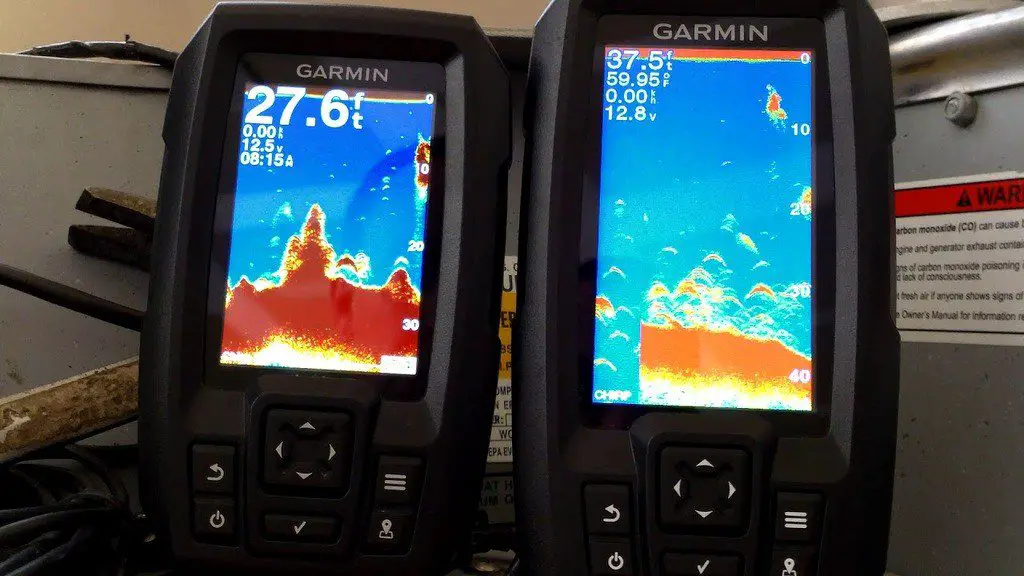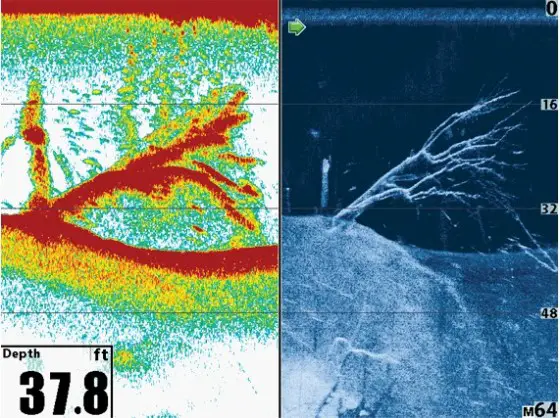CHIRP is an upgraded sonar technology that uses pulses of different frequencies that are 50 times stronger than traditional sonar and provides a near-photographic image of everything underneath your boat.
The earliest model fish finders I owned used 2D sonar technology for many years until recently when CHIRP sonar was first introduced to the fishing industry. CHIRP stands for Compressed High-Intensity Radiated Pulse. This technology has revolutionized the way fish finders work and the way I fish.

CHIRP sonar was originally developed for military purposes, but the technology was quickly discovered to be very valuable for anglers in saltwater and freshwater environments. CHIRP signals can be sent using radars, lasers, and sonar equipment. These components work by sending out sound waves that are picked up and oriented in a way that lets you view what’s beneath your transducer.
The main difference between the traditional 2D sonar and CHIRP technology is that CHIRP sends out a much longer pulse duration, which allows the device to pick up much more detail with greater accuracy than ever before. This helps to see underwater structure and individual fish, which has helped me to find better places to put my bait.

Table of Contents
How Does CHIRP Work?
Unlike traditional sonars, CHIRP uses a series of frequencies that vary in length. When using CHIRP in fish finders, these transducers operate at a much lower frequency than your average sonar equipment that might be used for military purposes. I can confirm that CHIRP’s extensive range of varying frequencies helps create a much more accurate and detailed image of what’s below your boat.
CHIRP sonar pulses can be as high as 117k and are as much as 50 times stronger than the average pulse typically used in 2D sonar technology. The CHIRP system retrieves this data that bounces back from the system and compiles a pulse compression and pattern compilation that gives an overall view of the different features that line the bottom of the particular body of water below your boat.
Newer CHIRP technology can now be adjusted to lower frequencies that are also combined with higher frequencies to create a more comprehensive image that cuts down on the amount of extra ‘noise’ that often happens with older sonar systems. Thanks to the variety of lower and higher frequencies, the CHIRP system can reach a much greater depth more quickly than other, more traditional systems.

Medium vs High CHIRP
CHIRP sonar can be divided into high CHIRP, medium CHIRP, or even non-CHIRP sonar. Each frequency has its own set of limitations and advantages and you should understand how each one will function in different environments.
High CHIRP
High CHIRP operates at frequencies of up to 150-240kHz. This type of CHIRP will provide exceptional detail and I’ve found is best used in freshwater lakes or rivers where you are fishing in less than 600 feet of water.
Since the High CHIRP is much more sensitive than Medium CHIRP, I’ve noticed it’s much more likely to pick up small schools of bait fish and small or medium-sized game fish at or near the bottom of the lake you’re at.
Medium CHIRP
Medium CHIRP is designed to operate at 80-160kHz and is much more suitable for fishing in offshore environments when your boat is expected to scan a much greater water section. Medium CHIRP is more useful when I’m trying to scan larger areas more quickly and detect larger schools of fish that might be hanging out near reefs, shipwrecks, or other deep water structures that often hold large numbers of fish.
One of the only downsides I’ve seen to using Medium CHIRP is that you’ll get less detail than you might with High CHIRP, making it difficult to tell what type of fish you’re looking at in some cases. I can’t view small objects with the same intense detail that High CHIRP offers, but Medium CHIRP is very useful for quickly sweeping over vast sections of water.
Benefits of Using CHIRP Sonar
Now that I’ve mentioned the specific capabilities CHIRP Sonar offers, we will explain some of the obvious ways it gives a clear advantage on the water compared to other types of sonar technology. CHIRP sonar is easily the most useful type of technology aside from SideScan or DownScan technology, and its advantages are clear.
Offers a More In-Depth View
One of the most obvious differences between CHIRP sonar and traditional 2D technology is that CHIRP allows you to obtain a much more in-depth view of what’s beneath your boat. Since it uses multiple frequencies, CHIRP sonar helps me to differentiate between large species of game fish and smaller bait fish that the larger species might be chasing after.
When using traditional 2D sonar, it might be hard to tell whether a reading represents a ball of bait fish or some underwater structure. However, with CHIRP sonar, I can typically tell the difference and adjust my strategy and approach accordingly.
Allows You to Categorize Fish Species
Another great advantage that CHIRP offers over other types of sonar is the ability to categorize fish and understand whether a fish reading might be a small crappie or a sizable bass.
When reading certain areas with abundant fish, it can be hard to tell the difference between small schools of bait fish and larger ones that might still be schooled up. CHIRP sonar helps to eliminate most of the guesswork.
It gives you a clearer picture of every minute detail along hard-to-read areas like ledges or brush piles where many different species and sizes of fish might congregate together.

Clearer Picture of the Water Column
One of the essential qualities you look for in sonar equipment is the ability to provide readings for different kinds of fish. It’s also equally important to have detailed imaging for anything beneath your boat. Knowing where standing timber, brush piles, fallen trees, and other structures are along the bottom gives me a huge advantage in making better decisions about when and where to target fish in a specific area.
Using CHIRP sonar, you can more easily distinguish between a brush pile and a small school of fish or any other type of object below your boat. If I know there is a school of bass around, and I’m not getting a bite with certain types of lures, I can reassess and use a different approach to understand better what the fish will be more apt to strike at in these instances.

Conclusion
All the best fish finders have CHIRP sonar, such as Humminbird HELIX, Garmin Striker, and Lowrance Hook.
Understanding all of the different factors between CHIRP sonar and other types of electronic equipment can be difficult to read and tell the difference between them in some cases. CHIRP has revolutionized the fishing industry, and it can provide a clear advantage to those willing to invest in a better quality fish finder.
Using these basic details, you should now have a full understanding of how CHIRP sonar works and how you can use it to enhance your time on the water to be more productive.
